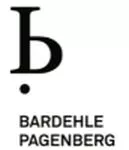The Enlarged Board of Appeal's Decision in G 1/24
After more than 50 years of the EPC, the EPO's Enlarged Board of Appeal (EBA) has finally provided more certainty on how to construe claims in its long-awaited decision G 1/24. Specifically, when assessing the patentability of an invention under Articles 52 to 57 EPC, the description and drawings shall always be consulted to interpret the claims. This landmark decision is a step towards aligning claim interpretation principles between the EPO and the national courts as well as the UPC. However, the decision may also entail new challenges when it comes to clarity objections during examination or opposition proceedings before the EPO.
1. Facts of the case
The referring decision T 439/22 concerns an appeal against the rejection of an opposition to a patent. Claim 1 of said patent includes the term 'gathered sheet', the interpretation of which was disputed by the parties, and the novelty of the claim hinged on its meaning. The patent proprietor argued that under the term's established technical meaning, the claim was novel. The opponent contended that, when interpreted in light of the description, the term had a broader meaning that would render the claim not novel.
The Referring Board noted a divergence in case law regarding the
interpretation of patent claims. There were conflicting approaches
on whether such interpretation, for assessing patentability under
Articles 52 to 57 EPC, should be based on Article 69 EPC and the
Protocol on its interpretation, on Article 84 EPC, or whether it
lacked a clearly stated legal basis, the Referring Board
noted.
Further divergence was identified regarding whether the description
and drawings should always be consulted when interpreting claims
for assessing patentability, or only when the claim is unclear in
isolation.
The Referring Board determined that the conditions for referral to the EBA were met and accordingly submitted the following questions to it:
Question 1
Is Article 69(1), second sentence, EPC, and Article 1 of the Protocol on the Interpretation of Article 69 EPC to be applied to the interpretation of patent claims when assessing the patentability of an invention under Articles 52 to 57 EPC?
Question 2
May the description and figures be consulted when interpreting the claims to assess patentability and, if so, may this be done generally or only if the person skilled in the art finds a claim to be unclear or ambiguous when read in isolation?
Question 3
May a definition or similar information on a term used in the claims which is explicitly given in the description be disregarded when interpreting the claims to assess patentability and, if so, under what conditions?
Oral proceedings before the EBA took place on March 28, 2025. The decision was rendered on June 18, 2025.
2. Decision
In its remarkably concise decision, containing five pages of
reasoning, the EBA deemed the referral concerning Questions 1 and 2
admissible. According to the EBA, these questions concern a point
of law of fundamental importance with diverging case law. The
answers to the questions will also have a broad impact on the
practices of the Boards, and the Examining and Opposition
Divisions.
Regarding Question 1, the EBA notes that neither Article 69 nor
Article 84 EPC provides a fully satisfactory legal basis for
interpreting patent claims during patentability assessment
(Articles 52-57 EPC). Article 69 EPC mainly concerns infringement,
while Article 84 EPC addresses clarity of a claim and formal
requirements, not interpretation. Hence, according to the EBA, the
strictly formal answer to Question 1 would be "No".
However, the EBA observes that existing case law applies the provisions of Arts. 69 and 84 EPC analogously to patentability.
In this context, the Boards of Appeal consistently start from the claims as the basis for patentability assessment. The EBA adopts this position.
Further, concerning Question 2, the EBA rejects the view that the description and drawings shall only be consulted in cases of ambiguity, as this would contradict the principles of Article 69 EPC as well as the practices of the national courts and the Unified Patent Court (UPC). Instead, they must always be referred to when interpreting claims. The EBA also emphasizes the harmonization philosophy behind the EPC (G 5/83, G 3/08), referring specifically to the UPC's Court of Appeal decision in the 10x Genomics v. Nanostring case (UPC_CoA_335/2023), where the UPC had adopted the very same position. Further, the EBA notes that the finding that a claim is clear is in itself an act of interpretation, i.e. the conclusion that a claim is clear cannot be reached without having interpreted the subject-matter of the claim.
In conclusion, the EBA answers Questions 1 and 2 (combined) as follows:
"The claims are the starting point and the basis for assessing the patentability of an invention under Articles 52 to 57 EPC. The description and drawings shall always be consulted to interpret the claims when assessing the patentability of an invention under Articles 52 to 57 EPC, and not only if the person skilled in the art finds a claim to be unclear or ambiguous when read in isolation."
Question 3 was found to be inadmissible in view of the EBA's answer to Question 2.
Finally, the EBA emphasizes the importance of clear claims examined under Article 84 EPC and supports amending unclear claims to meet clarity requirements. At this point, the decision of the EBA refers to comments from the President of the EPO, who connected the application of Article 84 EPC with the need for high-quality examination standards.
3. Practical advice
3.1 Patentability in prosecution
It is now clear that the patent description and drawings must always be taken into account when assessing novelty and inventive step, not only when claims are unclear or ambiguous. Up to now, examiners have typically not engaged in substantive dialogue on how the claims should be interpreted in light of the entire disclosure. Rather, they have regularly taken the position that the meaning of the claim needs to be clear from the wording of the claim alone.
Does this mean that, as a result of G 1/24, search and examination reports from the EPO will deal with claim interpretation first? Probably not, given the limited amount of time examiners have to prepare such reports. However, the outcome of the decision gives applicants a legal basis for opening such discussions if they deem them helpful in their case.
In return, examiners may ask for additional claim amendments for reasons of clarity under Article 84 EPC. Given that the EBA has explicitly sided with the President of the EPO on this point, examiners are likely to seek (even) greater "clarity" in the claims to avoid ambiguities that might complicate the interpretation. The EBA states: "The correct response to any unclarity in a claim is amendment" (Reasons 20). This may sound quite clear.
In practice, however, things are often less "clear". First of all, there is no easy and clear-cut definition of what constitutes an "unclarity" – the assessment of "(un)clarity" frequently involves subjective judgment. Secondly, according to the case law and Guidelines of the EPO, any amendment must be "directly and unambiguously" derivable from the original application – as understood and practiced by the EPO – and must not result in an "intermediate generalization". Therefore, excessive reliance on Article 84 EPC can undermine the goal of high-quality examination, particularly when it is used as a hook to require extensive amendments without considering the substantive quality of an invention.
As a matter of practical and strategic importance, applicants should draft their applications with claim language that is – as far as possible – "EPO-proven" to ensure clarity from the outset. Broad claims, which are often challenged under Article 84 EPC, should always be accompanied by proper fallback positions, either within the claims themselves or in a general part of the description. Otherwise, the combination of strict requirements for "clarity" and "original disclosure" may result in a new "inescapable trap" situation already during examination.
3.2 Principles of claim interpretation in view of G 1/24
The decision states the proposition that the description and drawings shall always be consulted for interpretation. However, it also stops there and does not give any guidance on how claim interpretation should be conducted on this basis, possibly because it considered this to be out of scope of the referred questions.
There is a broad spectrum of possibilities regarding how to interpret claims when consulting the description and drawings. One may, as a minimalistic position, only consider explicit definitions given in the description. On the other side of the spectrum, an alternative approach recognizes the relevance of functional or systematic considerations, giving less weight to the mere wording of the claims. Given the reference to the "harmonization philosophy behind the EPC" (Reasons 16), it may well be that – on the long run – EPO practice will follow UPC case law. However, for the near future, it is to be expected that EPO practice will rather be limited to considering definitions or other unambiguous statements in the description. The "existing body of case law" to which the EBA refers (Reasons 10) does seem to require more in-depth interpretation.
3.3 Added matter – tailwinds for patentees in opposition proceedings?
The decision could help patentees in opposition proceedings defend against the ground for opposition of extension beyond the content of the application as filed.
If, for questions of added matter under Art. 123(2) EPC or Art. 100(c) EPC, these provisions require that the subject-matter be determined, the patent claims must be interpreted consistently with Articles 52 to 57 EPC, i.e., in the light of the description and figures. In practice, this may lead to fewer cases of inadmissible extensions being identified in opposition cases. One can think, for example, of cases in which, during prosecution of the underlying application, a term which is not used literally in the original disclosure has been added to a claim, with the original disclosure only using similar terms. If the patent is granted with such a claim and opposed for added matter in view of the use of the added term, the patent proprietor could invoke the principle of claim interpretation to argue that the claimed term needs to be understood synonymously to the term in the description. If the Opposition Division follows this interpretation, the attack based on added matter fails.
In Germany, the requirement to first interpret the claims before examining added subject-matter (as stipulated in the famous "Rotorelemente" decision, BGH, X ZR 43/13, judgment dated May 12, 2015), allows patent proprietors in practice more often to defend against attacks for inadmissible extension based on differences in wording between the claims and the original disclosure.
3.4 Care must be taken when adapting the description
Now that it is certain that the description will also be taken into account when interpreting the claims in potential opposition proceedings, particular care must be taken when adapting the description to the claims during examination. Any addition or deletion to or from the description should be carefully assessed for its implications on the interpretation of the claims. Most notably, it should be avoided that an adaptation that may appear simple and straightforward at first sight could change the meaning of a claim term in a way that opens up an avenue for attacks based on an alleged extension beyond the content of the application as filed.
3.5 Practitioners have to be familiar with case law of both the EPO and the UPC
The EBA explicitly aligns itself with the UPC, emphasizing the need for consistent interpretation of Article 69 EPC across jurisdictions. In this context, the EBA stresses that it would be "a most unattractive proposition" for the EPO to adopt a practice contrary to that of the courts responsible for enforcing its patents. This stance reinforces the broader goal of harmonizing European patent law across institutions. Practitioners should therefore ensure that they are well-versed in, and able to apply, the case law of both the EBA and the UPC, as underscored in UPC_CoA_405/2024, where the UPC expressly expected the parties to have knowledge of EPO case law.
The content of this article is intended to provide a general guide to the subject matter. Specialist advice should be sought about your specific circumstances.





